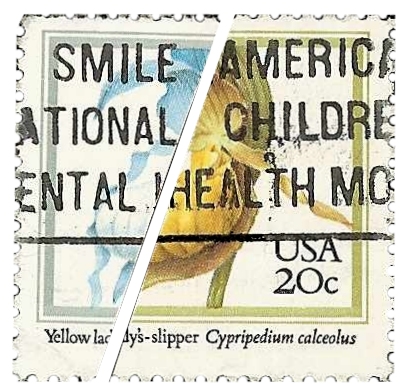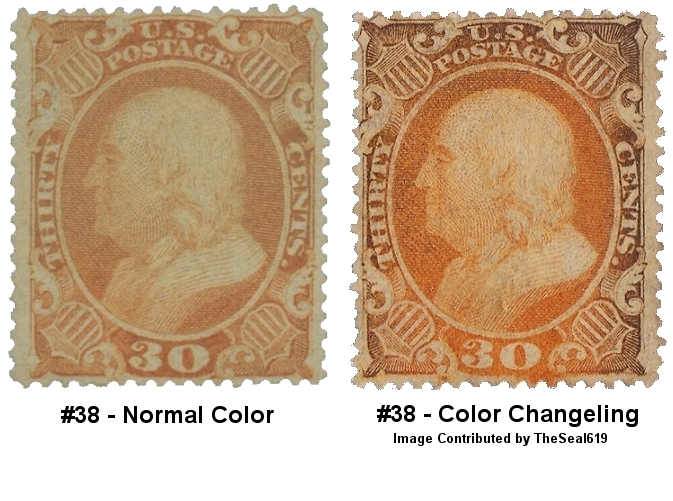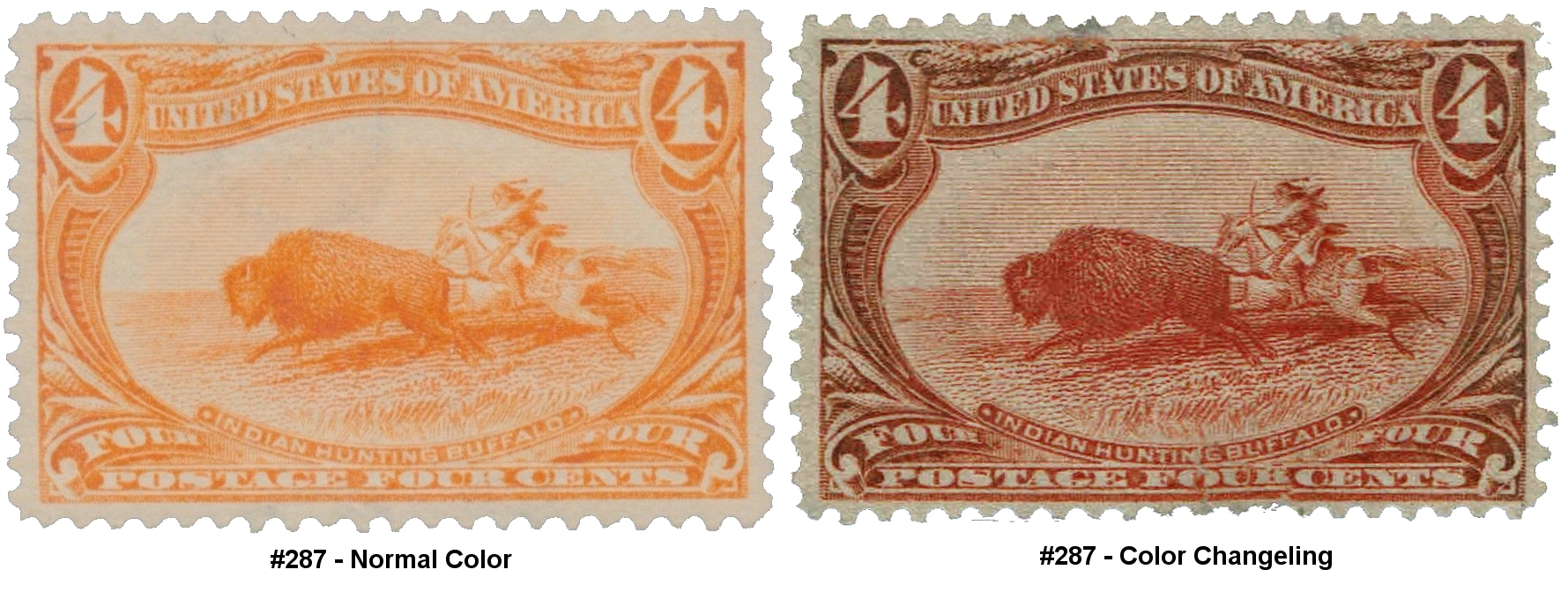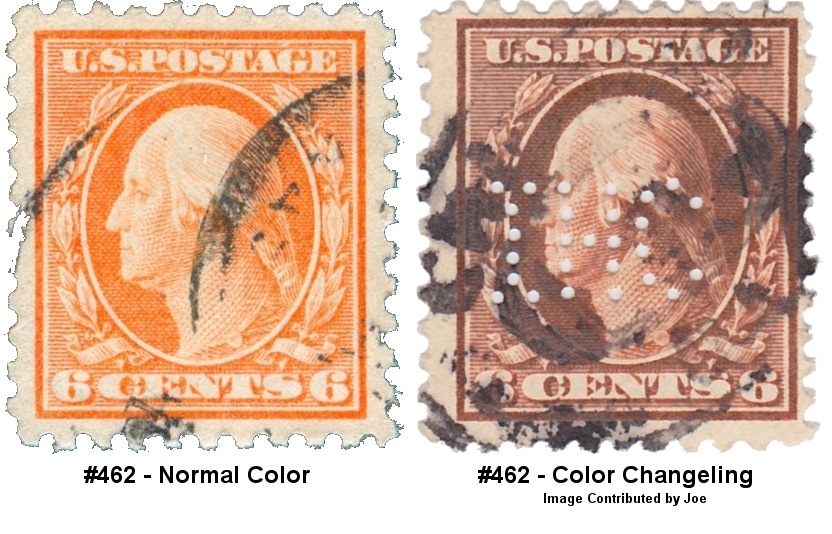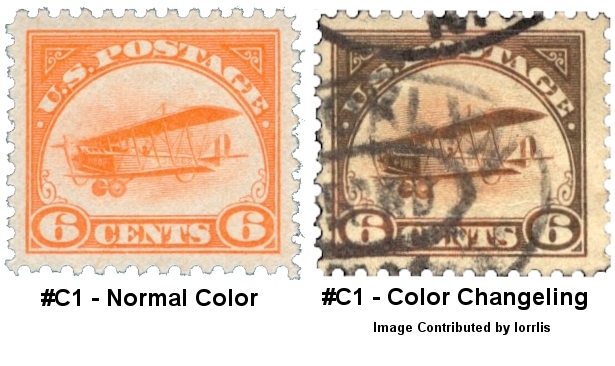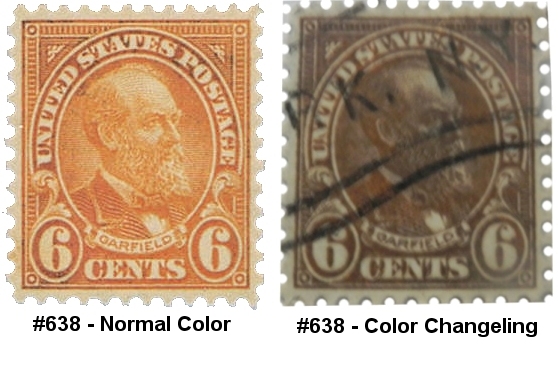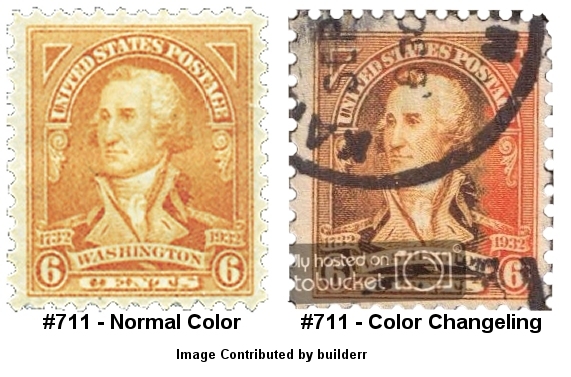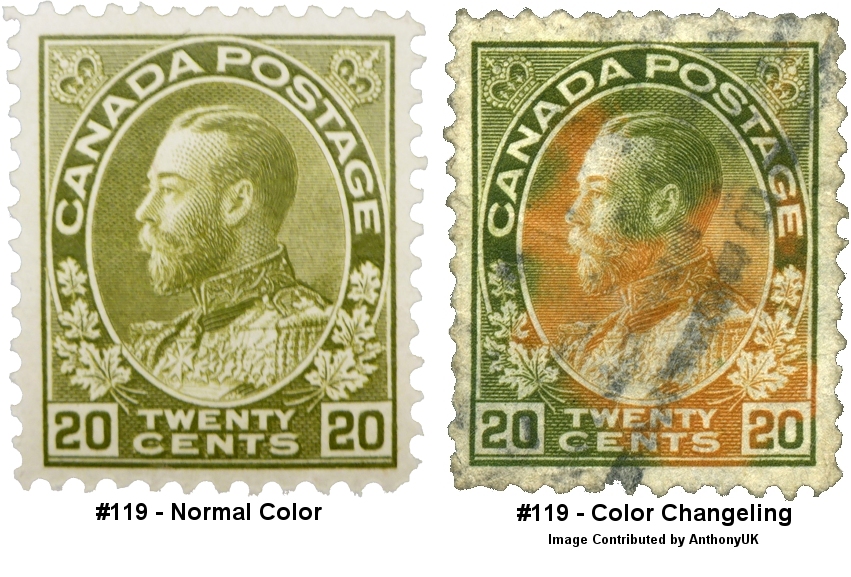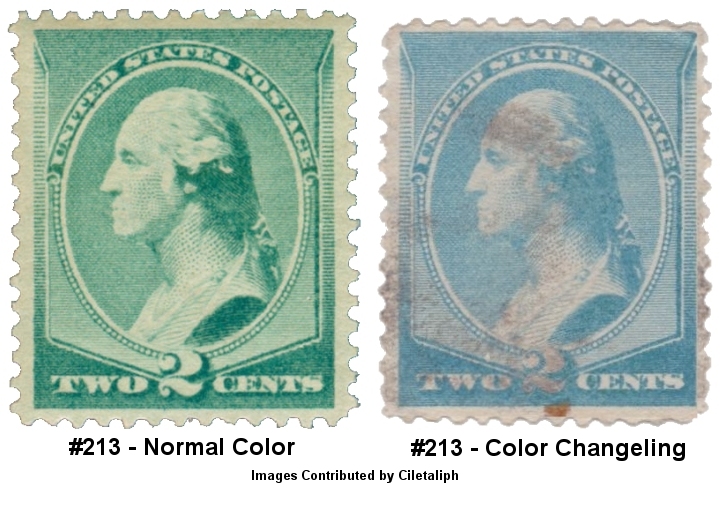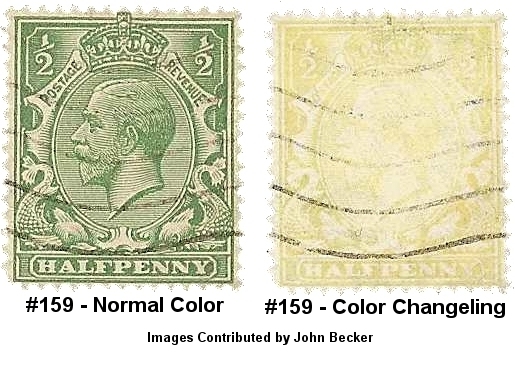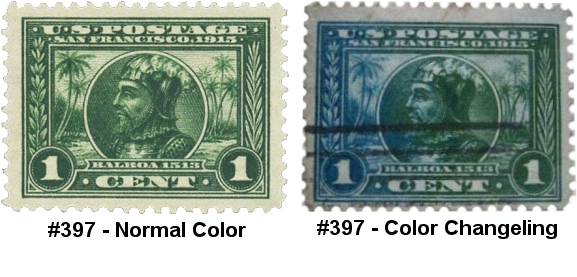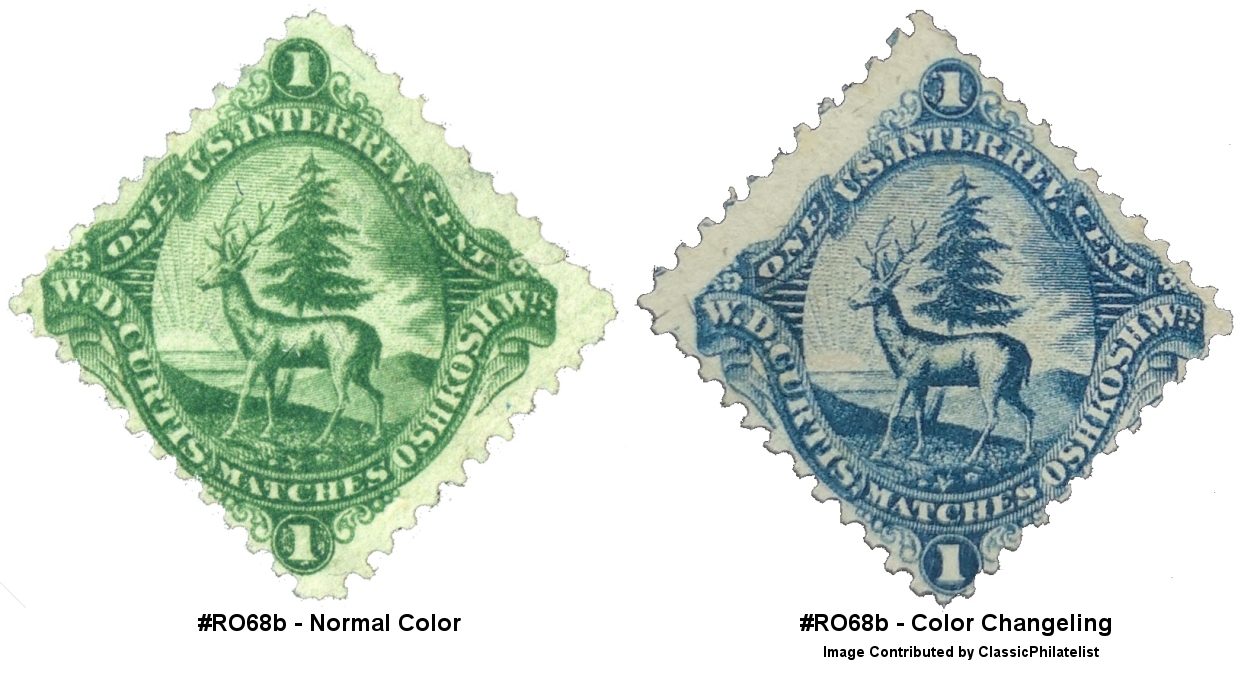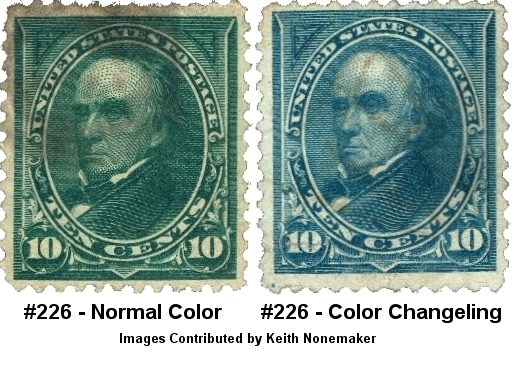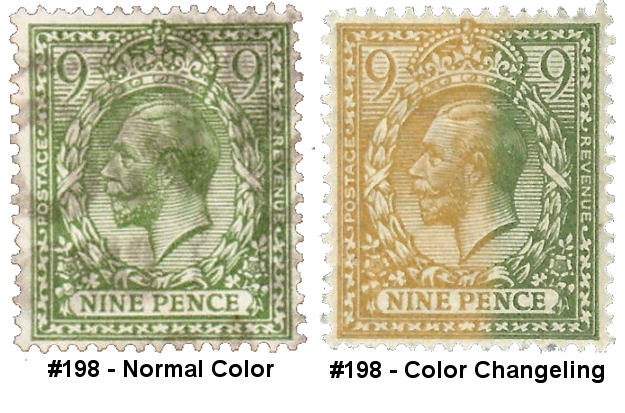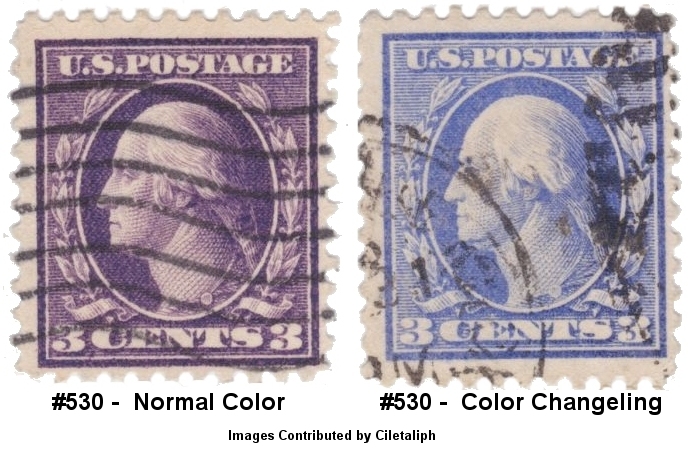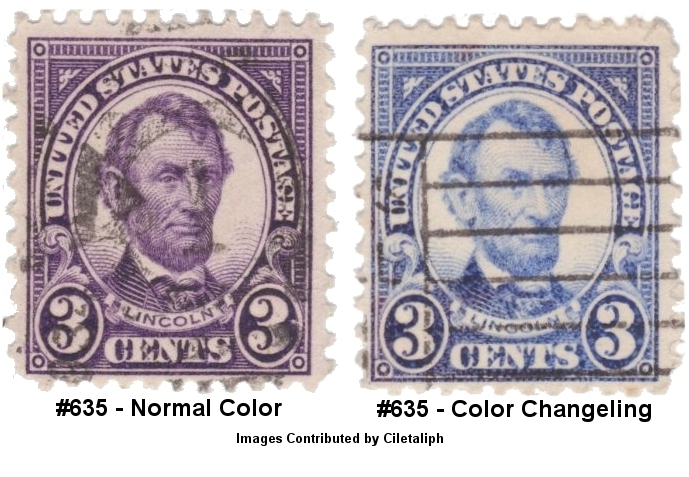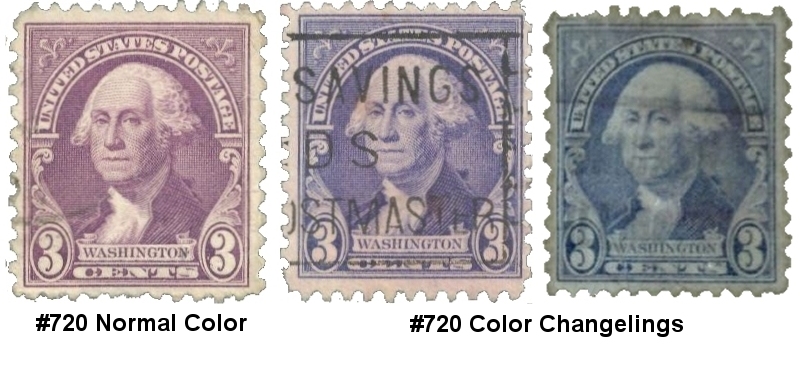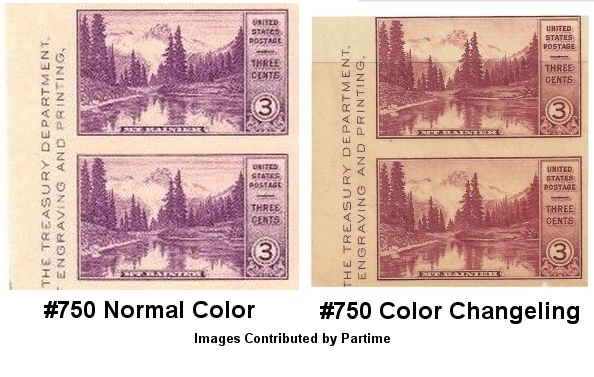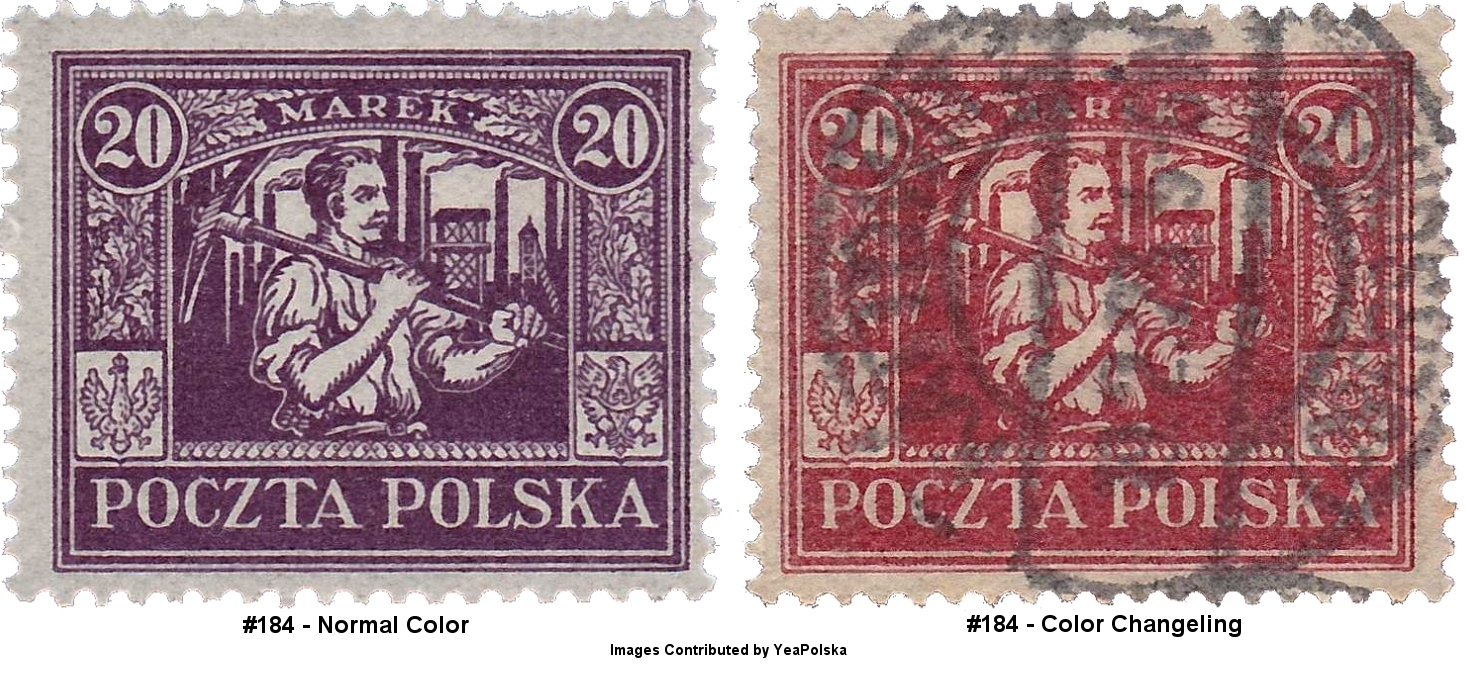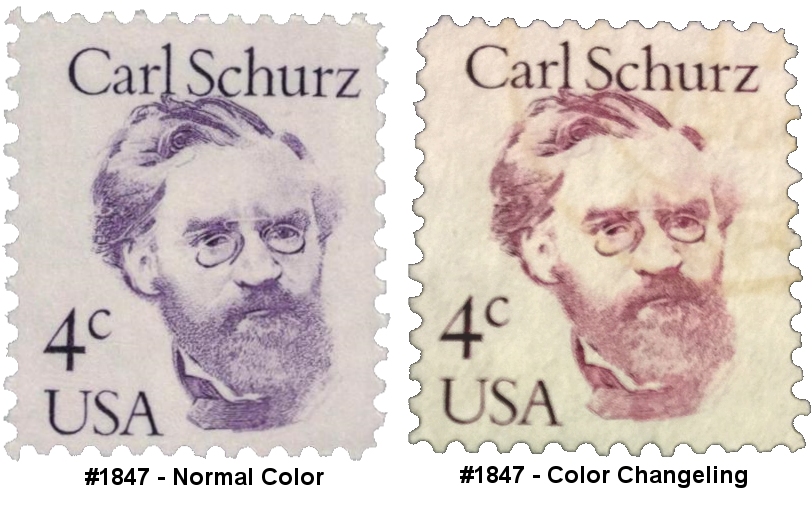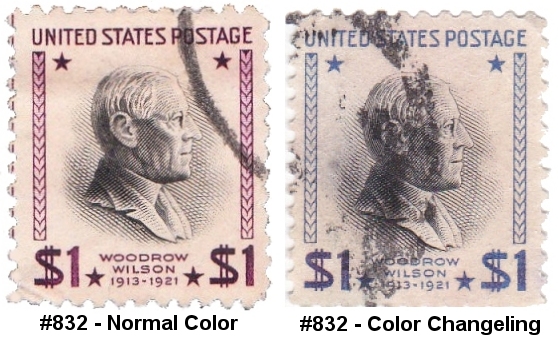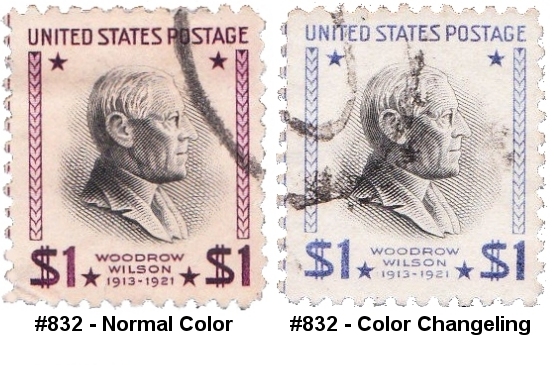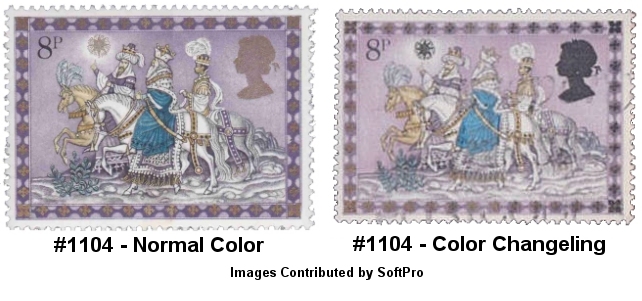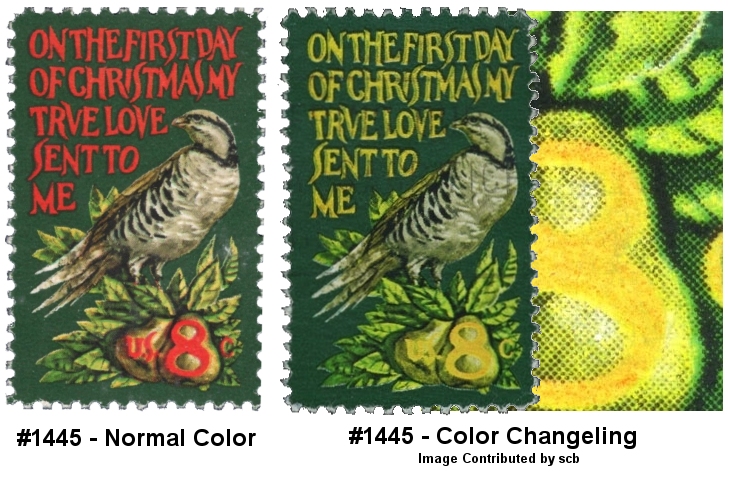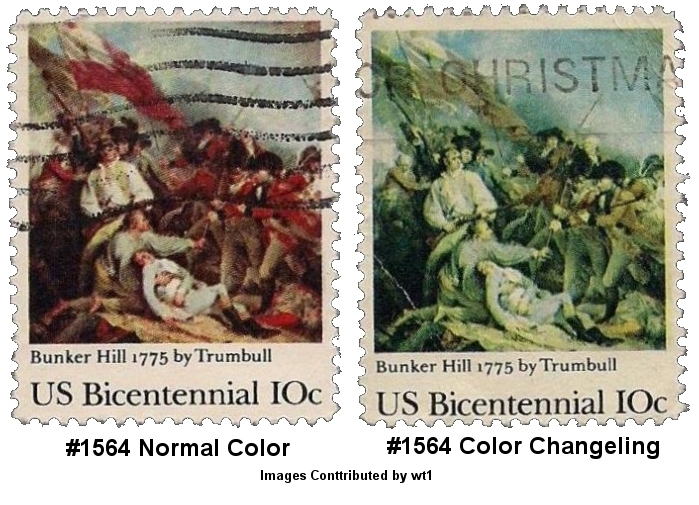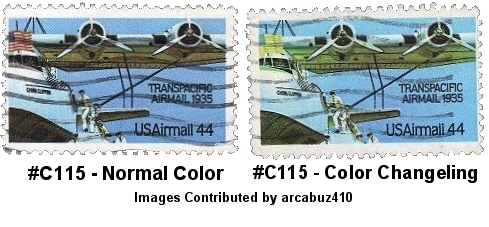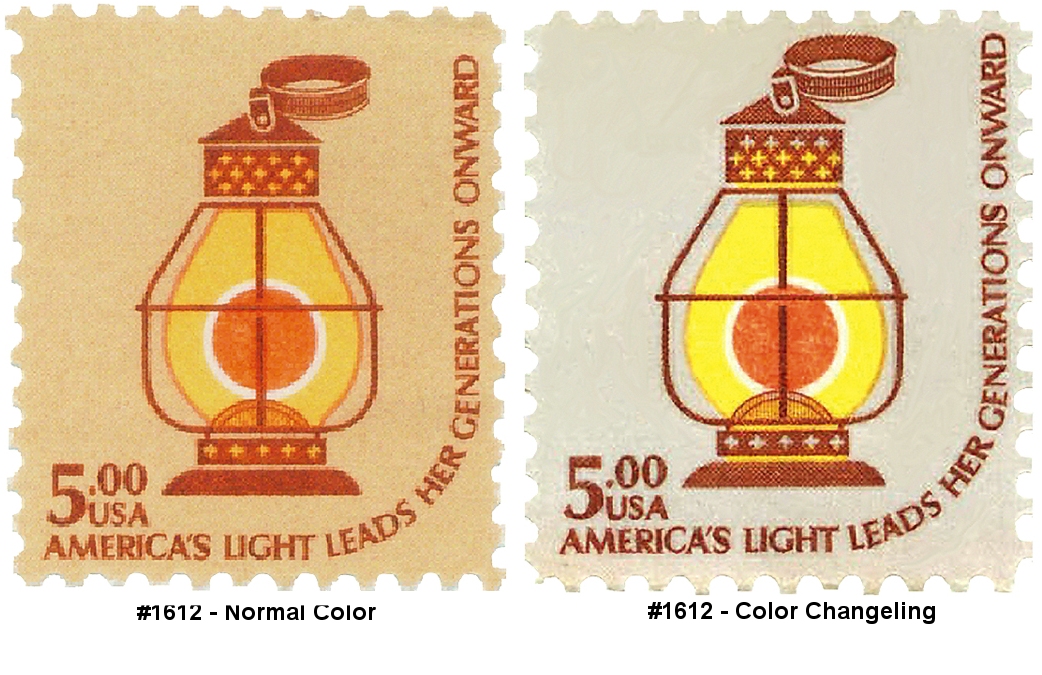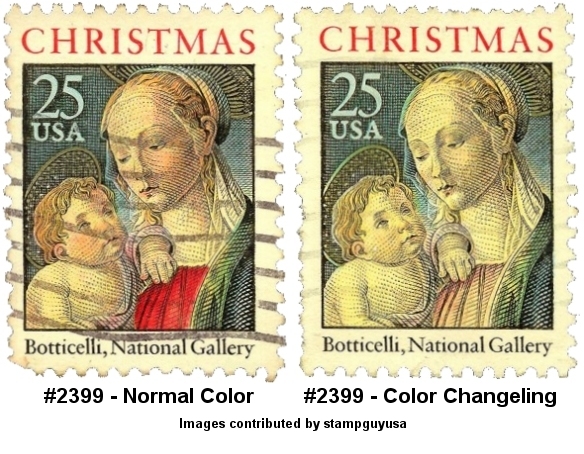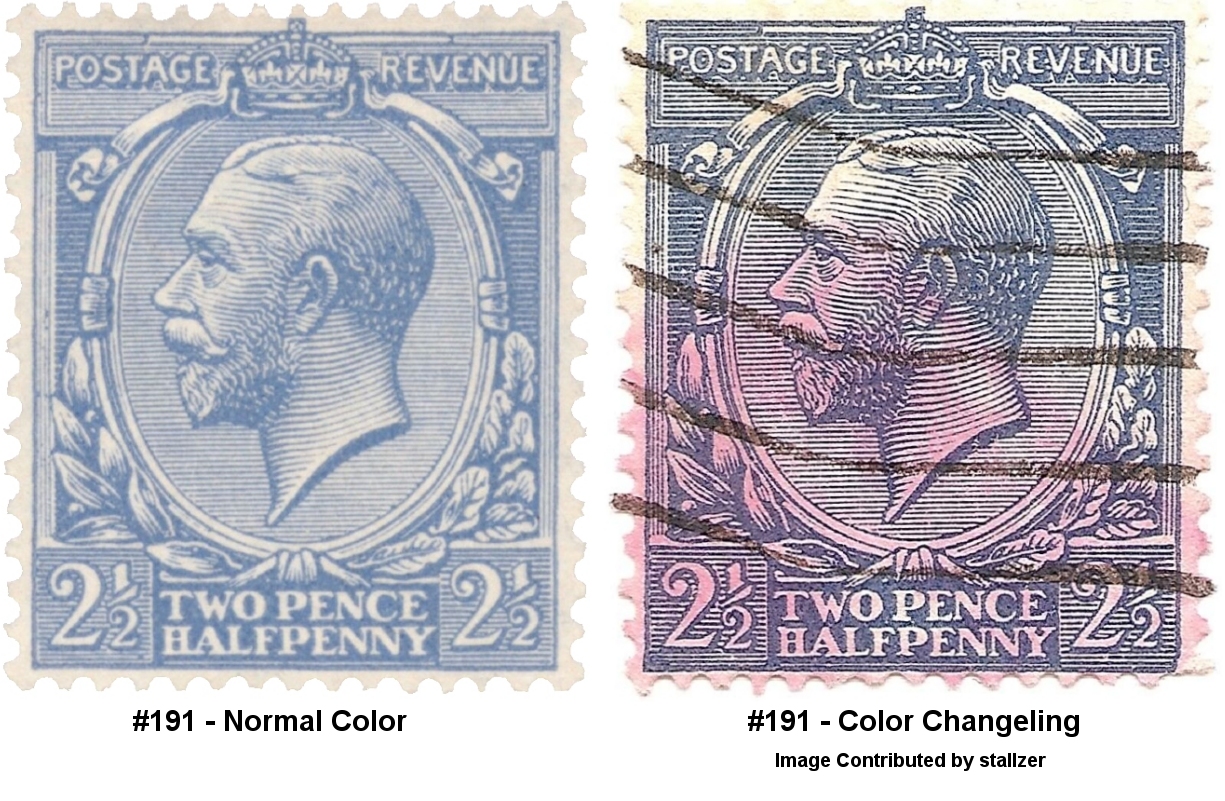Finding something different or unusual always catches the attention of a stamp collector. Stamps which are a strikingly different color of have a color which appears to be missing often jumps off the page and sends collectors into catalogs to see if it is a known variety. There are three primary ways these stamps can occur; true printing errors, light exposure, and/or chemical exposure.
Unfortunately the majority of the time these stamps are actually ‘color changelings’. Color changelings are stamps which have had a change in the color due to environmental conditions and/or light exposure. This change may have been accidental or even an intentional attempt to deceive. For example; it is fairly common for stamps which have been displayed in picture frames to have color changes from light exposure, this may affect the entire stamp or just certain colors on the stamp. In other cases, unscrupulous people may have treated the stamp with certain chemicals to fool collectors and the marketplace.
When faced with an unusual colored stamp, consider if the stamp is used. Used stamps may have been soaked with additional chemicals including bleach, chlorine, or dish washing liquid (which contains ‘brighteners’). It is also possible that during the bath water soluble dyes from backing papers have tinted the water and have been absorbed by the stamps. Light exposure typically reacts with the reds, oranges, and yellows first. A good example of this is John Becker's example of the Lady's Slipper stamp in the upper left of this page. The left hand side of the stamp has been exposed to direct sunlight and the yellow has faded out. This stamp also demonstrates how the fading of the yellow from green can cause a blue appearance (yellow + blue = green). Below are examples of green stamps turning blue from exposure to sunlight or UV rays. Violets and purples are also susceptible to color change, often moving to gray, greens, or blue (red removed leaves blue). Metallic inks can often be altered with exposure to certain chemicals either through direct contact or atmospheric contact. Orange and yellow inks often contained heavy metals; these typically react with atmospheric elements and turn darker. You can read more about this change in this article. Inks which easily change colors are called 'fugitive' .
Collectors should approach a new, previously unknown colored stamp with skepticism; even more so if it is a used stamp. If the stamp is older than 50+ years keep in mind that it is highly unlikely that a color variation has gone unnoticed for decades. If you still feel that you have found a new variety stamp you will need to spend some money and send it to a reputable certifying organization. They have equipment and expertise to verify your stamp as a true error and not a color changeling.
Changeling Gallery
Click on image to view high resolution
